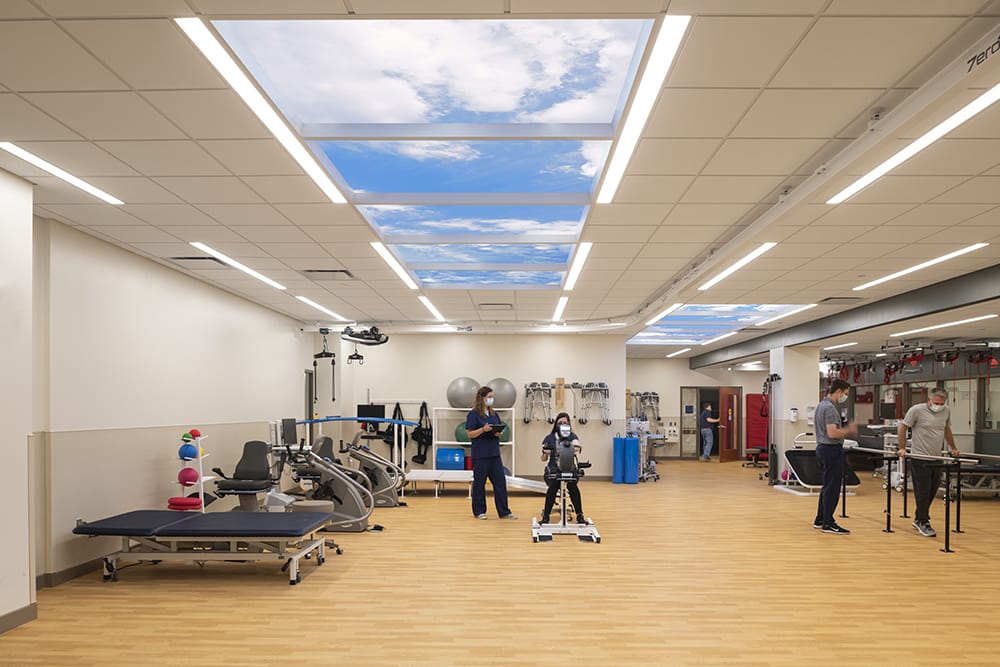By now, you’ve heard the story. Billionaire Charles Munger intends to donate $200 million dollars to the University of California, Santa Barbara, towards the construction of a 1.68-million-square-foot campus dormitory.
Munger Hall, a single block colossus housing 4,536 dorm rooms, would make the structure the 8th densest neighborhood on the planet. The deep plate design calls for 10-foot-by-7-foot windowless dorm rooms (which happen to coincide with the average dimensions of a solitary confinement cell).
In an interview with The New Yorker, the billionaire calls his design “clever” as “it would force students out of their sleeping cubbies and into communal spaces—with real sunlight—where they would engage with one another.”1
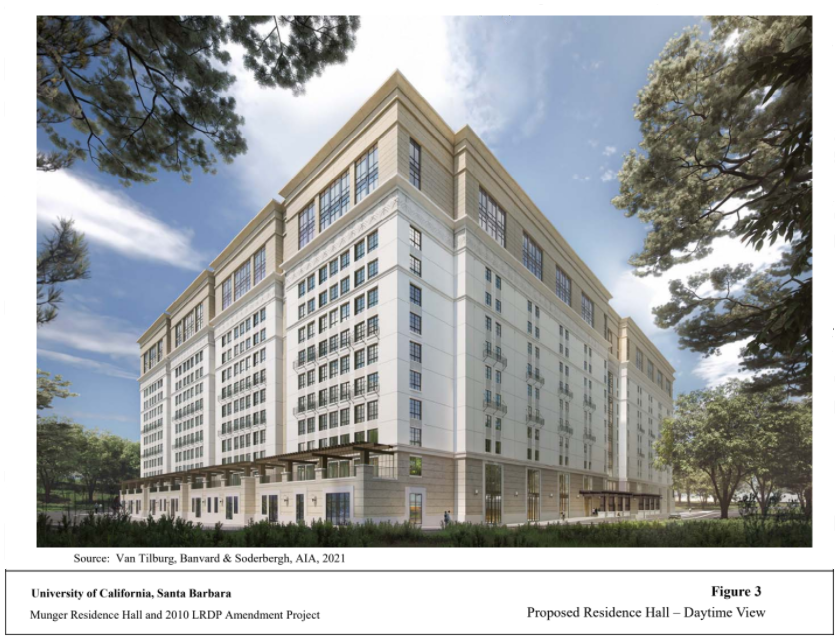
Munger’s $200 million contribution to the $1.5 billion project is contingent on UCSB adopting his proposed design. The vice chair of Berkshire Hathaway argues that the drawbacks of living in windowless rooms would be offset by an attraction to the dorm’s larger recreation rooms and study halls, as well as on-site amenities, such as a market, a bakery, and fitness center.2
In another interview since the backlash began, Munger emphasized that each windowless room would include a virtual window with tunable LED lighting that would make “every other college…jealous [because] it’s all about the happiness of the students.”3
Lost in the media’s limelight is the accuracy of the capabilities, benefits, and differences among various virtual windows. Much of the interior design’s controversy stems from oversimplifying the science and published research applicable to architectural products like tunable lighting fixtures, some of which are considered bone fide virtual windows.
While the Munger Hall windowless dorm rooms are to be outfitted with “a fully programmable circadian rhythm control system to substantially reflect the lighting levels and color temperature of natural light throughout the day,” Munger echoes the prevailing premise that daylight can be reduced to just two components: light intensity and color temperature.
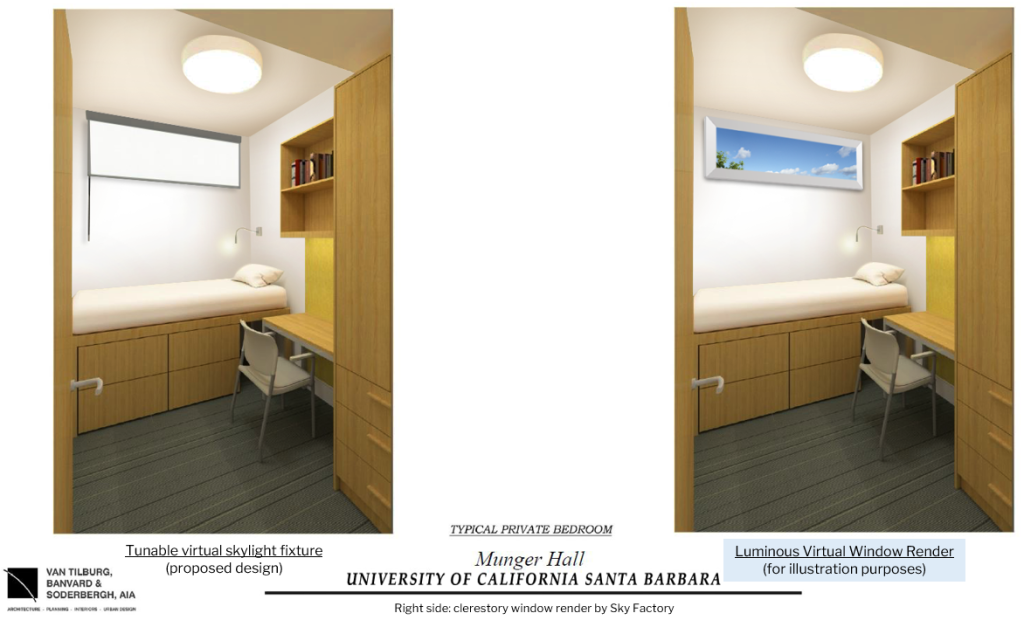
However, the restorative power of daylight rests in no small measure on the spatial vastness afforded by the sky’s atmospheric canopy, as well as light intensity and color temperature. Daylight’s third elemental attribute—its spatial nature, as noted in our AIA CES course, The Restorative Impact of Perceived Open Space, is responsible for the irreplaceable vastness that our senses and cerebral cortex register through the perceived zenith and the horizon line.
The sky’s zenith and horizon anchor our body’s orientation and spatial navigation. They also influence our subjective assessment of time. The larger the spatial footprint around our bodies, the more we perceive time to slow down, generating a psycho-physiological state that fosters wellbeing and aids inner restoration.
It is worth highlighting that Munger pointed out that the Disney-inspired fake windows would be outfitted with dimming knobs, allowing students to have whatever light they want. “Real windows don’t do that,” he quipped.4
Such commentary reveals a prevailing attitude towards new technology and its presumed ability to control the attributes of the natural environment. However, oversimplified devices lacking nature’s nuance and depth often produce unintended effects for mind and body.
Separating Fact from Fiction
Three decades before Edward O. Wilson, published his acclaimed memoir, Biophilia, launching the biophilic design movement, Richard Neutra, one of the most prominent modernist architects said:
“If we cannot yet produce a biologically perfect interior by technological means, our decision must simply be against making an interior fully dependent on intricate technology.
“In the ever more complicated situation of civilization, we have cause to remain on guard and not fall victim to a short-sighted awe and childish adoration for an undisciplined technology, tolerant of all its toxic consequences… We must be interested especially in subtle long-range effects and what they mean for survival.”
This observation, as poignant today as it was back in 1954 when it was published in Neutra’s seminal book, Survival Through Design, should be a stark reminder that the aim of good design is not to replace nature, but learn from her.
As Bill Browning, a leading voice in green building and sustainable architecture, notes in Terrapin Bright Green’s Nov. 15 blog post, windows with views to nature have a number of documented health and psychological benefits. Let us start there.
Tunable Lighting vs Illusory Views to Nature
First, it is important to underscore that tunable light fixtures, those that simply modulate light intensity and color temperature are not bone fide virtual skylights.
Virtual skylights should depict a properly scaled, perpendicular sky scene (or, in the case of a window, a distant scene) in order to meet the benchmark criteria and become a portal to perceived open space. Otherwise, a lighting fixture merely engages the retinal cells involved in entraining our circadian rhythm, but leaves dormant the many cortical regions involved in spatial cognition and depth perception.
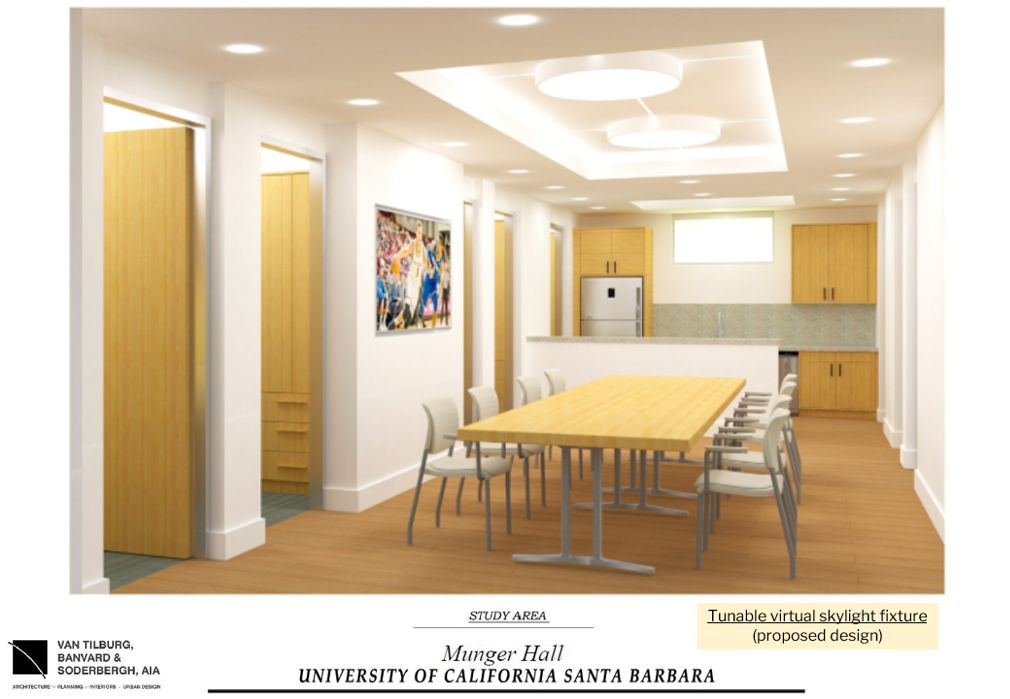
Browning correctly points out that tunable lighting panels “do not give the eyes a chance to focus on a distant view, which allows the lens to flatten and eye muscles to relax, thereby mitigating eye strain and headaches.”5 However, the benefits of a research-verified virtual skylights go beyond ameliorating eye strain. Their core benefits stem from how our brain weaves both focal and peripheral vision to create an integrated perception of three-dimensional space in our awareness.
Cognitive psychology studies reveal that we are naturally drawn to the polarity of commanding vistas of our surroundings (Prospect) from a place of safety and comfort (Refuge). Furthermore, in environmental design, the concept of Prospect & Refuge is one of the most sought-after features in any architecture.
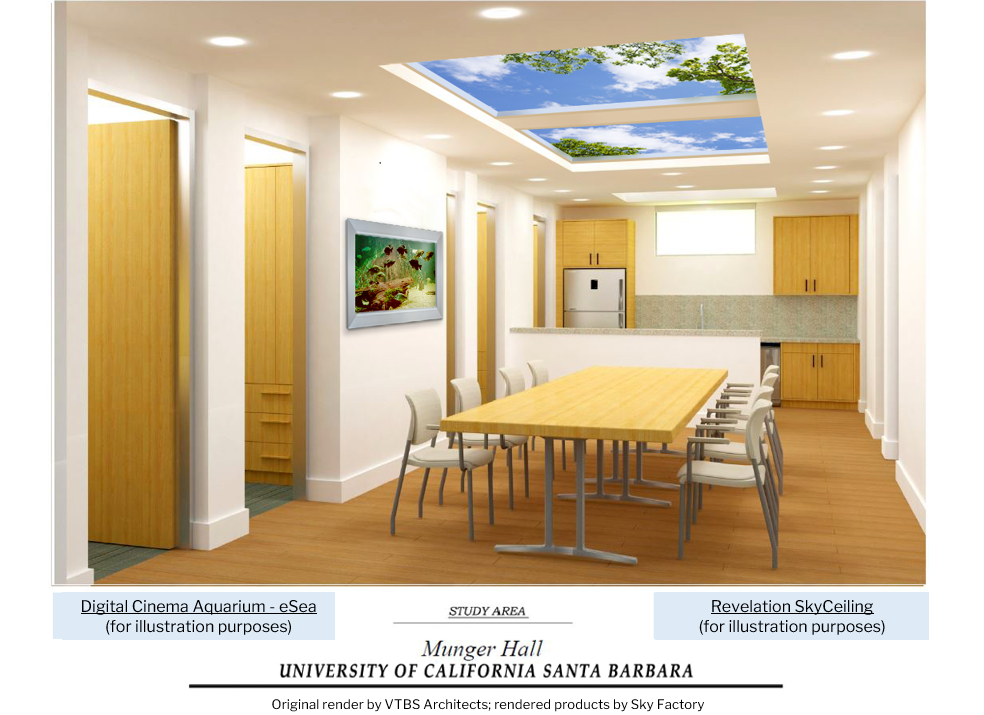
Therefore, the value of an illusory window or skylight rests in its ability to generate a palpable measure of spatial polarity, that is, exposure to contrasting spatial scales, from a secure interior. In many renovation or retrofit projects, adding windows with a view to nature is not possible. On the other hand, incorporating an illusory change of scale is both therapeutic and cost-effective.
Browning also cites a 2008 study from the University of Washington that highlights the pitfalls of drawing conclusions from experimental conditions when a study’s methodological design assumptions are not airtight. The often-cited study compared the recovery periods of subjects from a performance test and a low-level stressor (measured by heart rate) when placed in one of three scenarios.
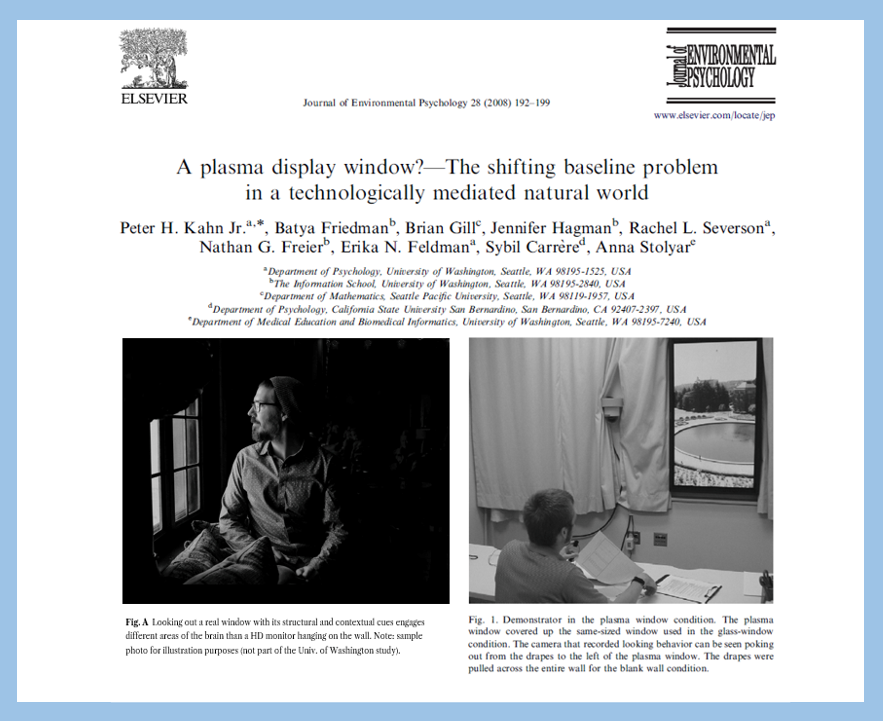
In the first scenario, subjects recuperated from the stressful stimulus by sitting next to a real window with an unencumbered view to nature. In the second scenario, subjects sat before a plasma window (a HDTV monitor) displaying the same real-time view to nature afforded by the real window in the 1st scenario. And finally, in the third scenario, subjects recuperated by sitting before a blank wall.
However, looking at the details of the study, one aspect stands out. Peter Kahn and his research team assumed that the benefits of looking at a virtual window stemmed from the content of the view, rather than its perceived spatial properties. It is paramount to underscore that spatial properties may only emerge in relation to the view’s surrounding context.
Treating a window view as 2D televised content ignores the sensory relevance of environmental context. In order for a virtual window to be perceived as a multisensory conduit to 3D space, the installation must trigger the proper cortical areas of the brain. The hippocampus, one of the key areas of the brain involved in spatial cognition, is only engaged when the proper contextual cues are present.
When the proper structural cues around the sensory stimuli (in this case, the televised view) are woven together to create the expected environmental context, our hardwired habits of perception are able to match the scene to the spatial maps of similar experienced scenes, thereby yielding a perceived spatial experience. Therefore, a credible view to nature must be staged to look like it is seen through a bone fide window.
While Kahn’s study made extraordinary efforts to replicate the point-of-view offered by the real window—placing the plasma screen at approximately the same height and distance from the viewer—no attempt was made to recess the monitor into the wall and reproduce the proper environmental context of a real window such as creating the proper window framing to conceal the monitor. Without such treatment, confining the visual view is confined to that of a flat 2D monitor screen.
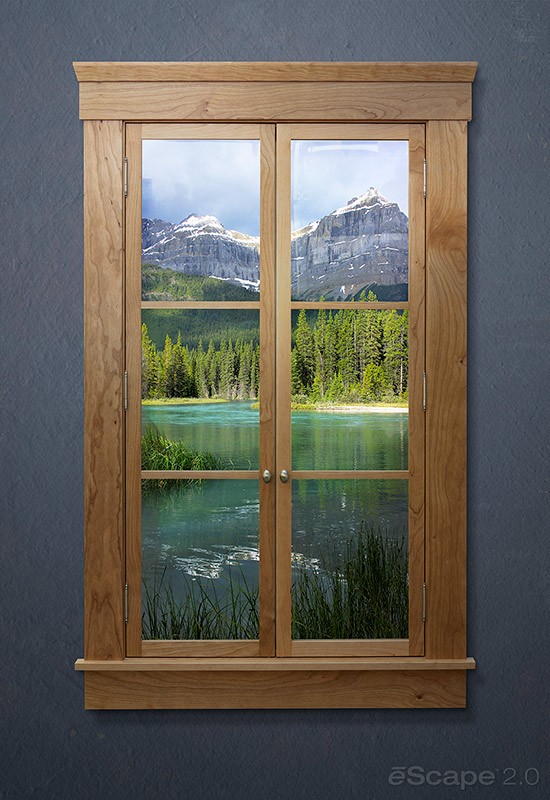
The neuroscience of visual processing establishes that environmental context modulates cognitive perception. Studies have shown that viewing the same object under different circumstances (modifying the contextual and structural cues) alters the strength of the visual signal generated by the cerebral cortex. Hence, the context of sensory stimulus is as important as its content.
The Neurobiology of Spatial Cognition
It’s worth noting that our hardwired habits of perception are primed to predict the nature of a stimulus by referring it to past experience. Therefore, unless we replicate the contextual cues that surround a real window, the content of a virtual window will be perceived as a symbolic image like a painting or photograph, rather than as a perceived spatial exit point.
This significant difference is borne out in Kahn’s study where subjects were found to be looking out the real window view (median 52 looks per participant) just as often as the plasma screen (median 58 looks per participant).6 However, despite holding subjects’ attention in comparable frequency, the heart rate recovery metric told a different story.
Kahn found that on tasks where participants spent more time looking out the glass window, their heart rate tended to decrease more rapidly than on tasks where they spent less time looking out the window. However, this was not the case with the plasma screen. Kahn and his team did not find a relationship between the duration of looking at the plasma screen and the rate of heart rate recovery.
He concluded that digital representations of nature views lacked the full fidelity of real windows, but also surmised that the reasons for their failure to trigger the Relaxation Response might be more complex. However, Kahn’s assumptions about televised content led him to draw conclusions about the lack of efficacy in digital representations of nature that a revised methodology can very well challenge.
Because Kahn does not discuss how the visual processing system works or the areas of the brain involved in triggering spatial cognition and depth perception, a revised study might incorporate environmental context into an experimental scenario featuring a virtual window.
In a 2015 study published in the peer-reviewed Health Environments Research & Design Journal, Sky Factory, in collaboration with Texas Tech University and Covenant Health, validated the premise that a virtual skylight utilizing the principles of Masterly Composition could, in fact, engage a patient’s attention during recovery and lower acute stress and anxiety, even in the direct presence of a real window.
This study, The Impact of Simulated Nature on Patient Outcomes: A Study of Photographic Sky Compositions, examined the behavioral and clinical impact of bi-sensory virtual skylights in a medical-surgical inpatient unit at Covenant Health Hospital in Lubbock, TX. The study assigned patients randomly to identical rooms in either the control or experimental group. Both groups had direct access to a real window with abundant natural light.
However, the experimental rooms were outfitted with a 24-sqaure-foot Luminous SkyCeiling, properly recessed into the ceiling plane with a realistic skylight framework directly above the patient’s bed. The eight-month, single blind study analyzed data from 181 subjects and found a difference in acute stress by more than half (53%) and a difference in anxiety (35%) in patients assigned to the rooms with the virtual skylights.
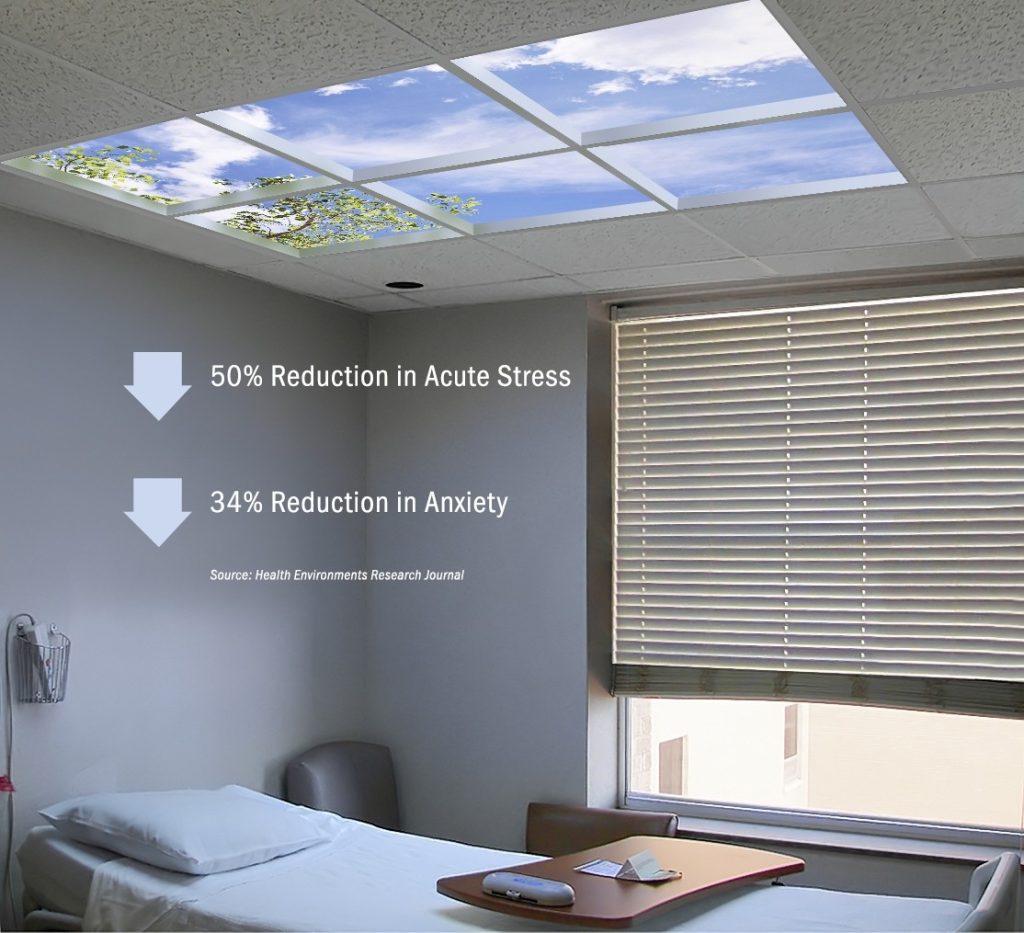
The patient room study at Covenant used the same Open Sky Compositions that were the subject of a pioneering 2014 fMRI study in neuroarchitecture. Unlike standard nature images that engage areas of the brain associated with positive emotions, Texas Tech University’s neuroimaging study found that Sky Factory’s proprietary sky images uniquely engage areas of the brain associated with spatial cognition and depth perception.
It was the first imaging study that documented a tangible cortical difference in how the compositional elements within a sky image do engage different parts of the brain, thereby separating representational imagery from bi-sensory (visual/spatial) illusions of nature at the level of cognitive perception.
Portions of this article discussing the importance of environmental context were extracted from Simulated Nature Research Gets Real, Part I and Simulated Nature Research Gets Real, Part II, originally published on the biophilic design site, Human Spaces.
It is worth noting that Munger Hall is not Munger’s first foray into windowless dormitories. In 2015, the philanthropist turned amateur architect donated $110 million to the University of Michigan, his alma mater, to build the Munger Graduate Residences. The eight-story, 380,000-square-foot building features 96 apartment suites containing six or seven bedrooms, many of which lack even a single window.
At the end of the day, mitigating a severe housing shortage by proposing thousands of windowless dorm rooms that will require total reliance on 24/7 artificial environmental systems also means the building would not be passively habitable. As Dennis McFadden, the architect who resigned from UCSB’s Design Review Committee, duly noted: “in the event of a power outage, the entire building—all 4,500 students and staff—would have to be completely evacuated.”7
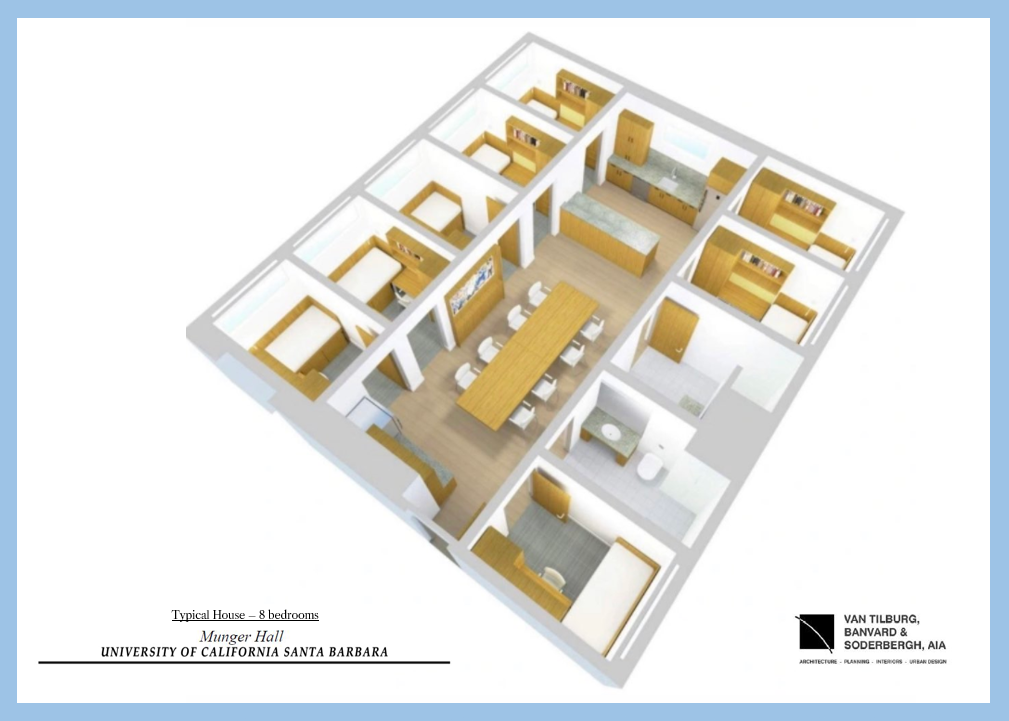
Virtual skylights are an effective architectural product that mitigate the deleterious impact of enclosed or isolated interiors, but to design thousands of living spaces without true windows, or at least research-verified virtual skylights capable of providing this essential attribute (spatial polarity) would appear to be detrimental for student wellbeing and good academic performance.
One fact stands out: honoring principles of Biophilia, wellness, and healing, patient room design no longer permits rooms without windows. Why then would we design dorm rooms that are likely to generate claustrophobia and stress?
When applied to the proper situation, evidence-based design virtual skylights provide verified health benefits in a range of isolated interiors. In this light, Luminous SkyCeilings and Luminous Virtual Windows are effective architectural products that generate perceived open space, a therapeutic experience that tunable lighting fixtures, on their own, cannot produce.
And this is the quantifiable measure that places biophilic illusions of nature in a category of their own.
References
1 Charles Bethea. “Nightmare of the Windowless Dorm Room.” The New Yorker. Retrieved on Nov. 17, 2021 from: https://www.newyorker.com/magazine/2021/11/22/nightmare-of-the-windowless-dorm-room
2 Tyler Hayden. “UCSB, Munger Respond to Avalanche of Backlash over Dormzilla.” Santa Barbara Independent. Retrieved on Nov. 16, 2021 from: https://www.independent.com/2021/11/05/ucsb-munger-respond-to-avalanche-of-backlash-over-dormzilla/
3 Fred Bernstein. “Exclusive Interview with Billionaire Charlie Munger on Controversial UCSB Dorm.” Architectural Record. Retrieved on Nov. 17, 2021 from: https://www.architecturalrecord.com/articles/15378-exclusive-interview-with-billionaire-charlie-munger-on-controversial-ucsb-dorm
4 Ibid, Charles Bethea. The New Yorker.
5 Bill Browning. “Munger Hall Meets Hans Christian Anderson.” Terrapin Bright Green. Retrieved on Nov. 17, 2021 from: https://www.terrapinbrightgreen.com/blog/2021/11/munger-hall/
6 Peter H. Kahn, Bayta Friedman, Brian Gill, Jennifer Hagman, Rachel L. Severson, Nathan G. Freier, Erika N. Feldman, Sybil Carriere, Ana Sto. “A Plasma Display Window? The Shifting Baseline Problem in a Technologically Mediated Natural World.” Journal of Environmental Psychology. Volume 2, Issue 2, 2008, Pages 192-199. Retrieved on Nov. 18, 2021 from: sciencedirect.com
7 Dennis McFadden. “Op-Ed: Why I resigned at UC Santa Barbara over a dorm design from a billionaire that has windowless rooms.” Los Angeles Times. Retrieved on Nov. 17, 2021 from: latimes.com https://www.researchgate.net/publication/228850472_A_plasma_display_window-The_shifting_baseline_problem_in_a_technologically_mediated_natural_world


